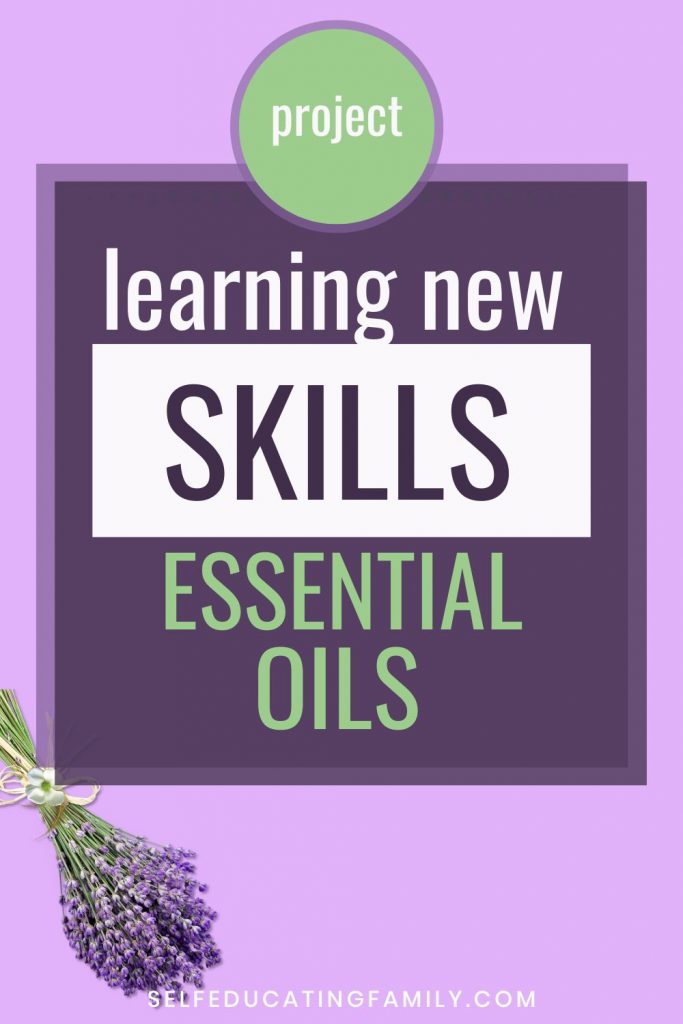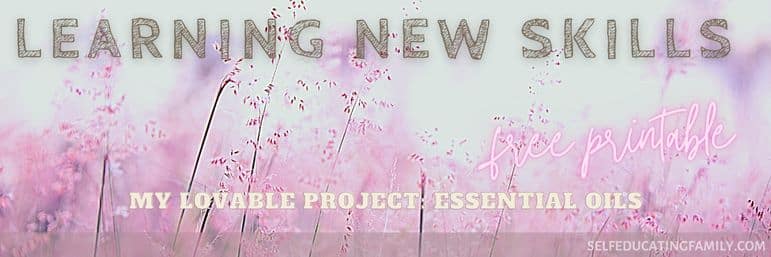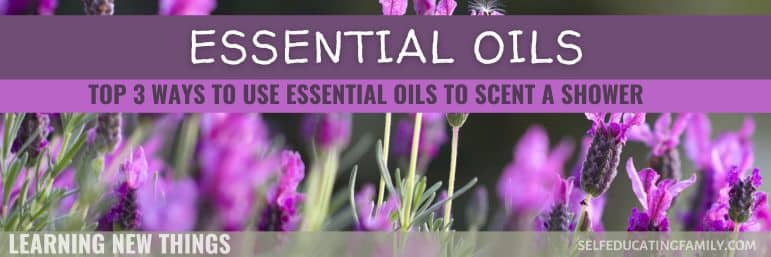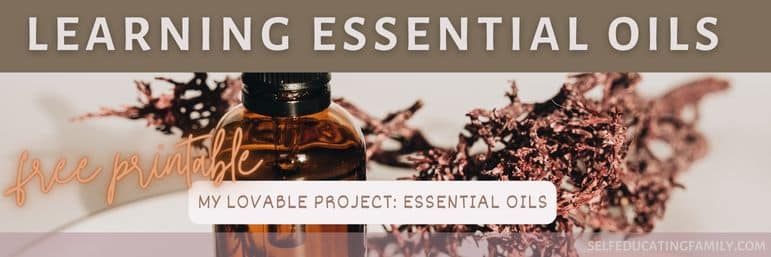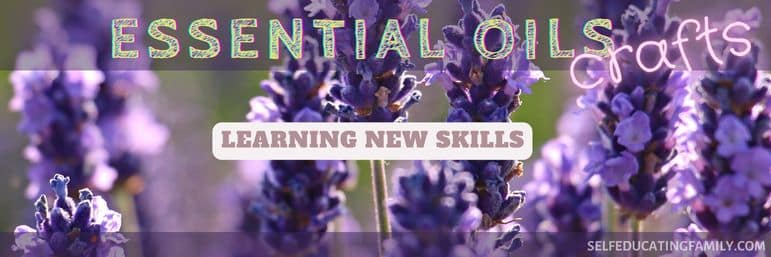What’s Inside: Learning practical life skills is part of becoming a self-learner. Teaching your kids new skills helps them to become better learners. We’ll take an in-depth look at an example of learning new skills from something I want to learn more about – essential oils. Learn along with me as I learn new skills on this learning project.
This post may contain affiliate links. If you find my content valuable and make a purchase through one of my links, I will earn a commission at no cost to you, which helps me keep this blog going so I can help you even more! I recommend products I trust and/or use myself, and all opinions I express are my own. Read the full disclaimer here.
Learning New Skills: Essential Oils Project
It’s always a good time to be learning new skills! This article will show how I plan to up my game with essential oils.
I actually already know beginning-level essential oils. Now I want to learn some very specific new skills about mixing my own blends.
Make a Plan
A first step I often neglect in learning new skills is “make a plan”. I’ve been studying various ways to efficiently learn new things, and they all have a common starting point: planning. Not OVER-planning, nor UNDER-planning. Just the right amount.
Best Books on How to Learn Something New
The three most valuable sources I’ve found recently for how to learn are:
- Ultralearning by Scott Young
- The 4 Hour Chef by Timothy Ferriss
- The First 20 Hours by Josh Kaufman
For this learning project, I’ll be mostly using the methods outlined in the First 20 hours. In my original review, I summarized a how-to shown below. I’ll also go on my own personal library binge to gather some specific reference books for ideas and to fill in the gaps in my knowledge of essential oils.
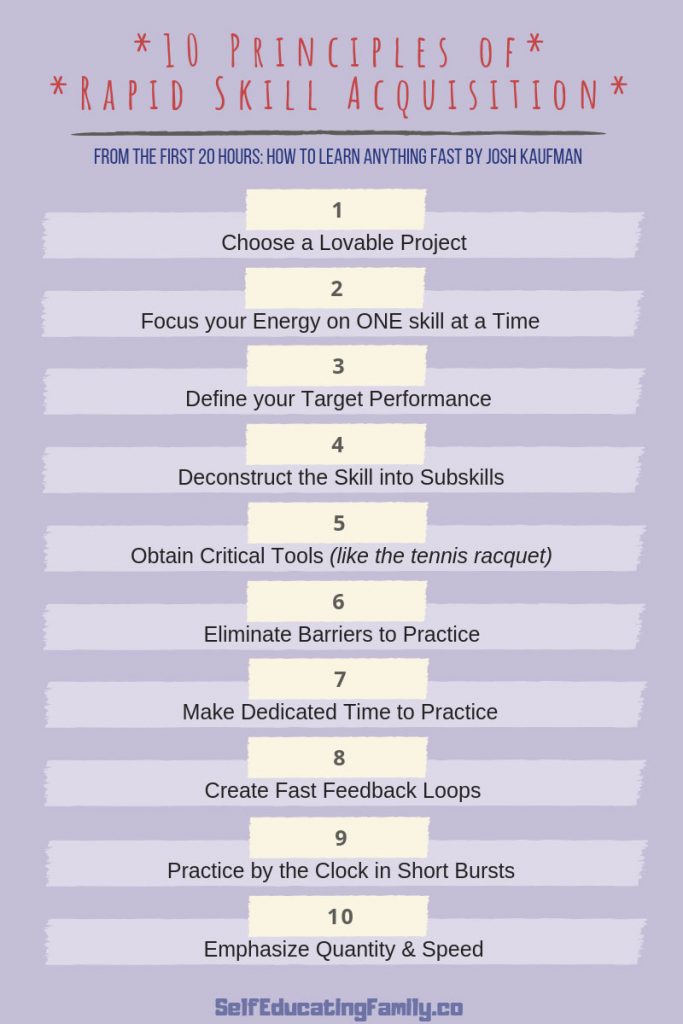
Step 1. Choose a lovable target
My learning new skills project is definitely lovable to me. I already love using essential oils, but I want to be able to incorporate them more naturally into the things I do all the time. I need to beef up my knowledge of the scents themselves and what else you can do with them.
I’m going to give this an hour’s worth of planning which will mostly take place in this article.
The goal
Learn enough about essential oils to take it up a notch (from beginner – where I am) to be able to use various oils without guessing if combinations work. I’ll use the 20-hour method to learn it fast.
Mindset, Motivation, and Methods
Learning new things can be easy and fun – simple and direct. I’ll use my 20-Hour Plan to keep myself on target – I tend to over-research and never actually get to the doing part, so the time factor in the plan can be particularly good for me.
I want to do this specific project because I want to be able to use essential oils to uplift mood and create a calm peaceful home as well as be able to address quick fixes.
Quick background on starting point
If you are following along with me but want to learn from the beginning, then your project would look different than mine. You’d have to cover the basics that I’m versed in.
Skip ahead to Project Step 2 if you already have a background in essential oils.
What are essential oils?
Essential oils are distillations from plants with strong smells – “volatile aromatics”. The plant compounds in these distillations are extremely potent and have different properties based on the plant they started with.
For instance, lavender generally comes from Lavandula angustifolia, which has an amazing smell in the flowers. It’s used to calm and relax, so often it’s used in a bath before bedtime. Peppermint (Mentha x piperita) has a completely different and recognizable smell from its leaves which is cool and refreshing and is often used in toothpaste.
Why use essential oils?
- Health
- Mood
- Skincare & Beauty
- Deodorizing
- Cleaning & Sanitizing
Grades of oils
If you’ve never bought essential oils before, you should be aware that there are a lot of choices and companies out there. Key things to know:
- Essential oils aren’t regulated by the FDA and many companies use descriptions that can mean almost anything. You’ll see words like “pure,” “therapeutic,” “food grade,” and others.
- Know your source: Not all companies are reputable.
The trickiest thing I found when first getting into oils, was that sometimes, I thought I was buying 100% pure essential oil and in fact, it was a diluted oil. It’s not that dilution is bad necessarily, for instance in massage or skin contact, you usually want to dilute the oil, but I wanted to dilute it myself and control what the extra ingredients were.
So, research it yourself. See below in the Keep Learning section. Find reputable sources. And sometimes, you get what you pay for.
Companies that I would trust include DoTerra, Young Living, Plant Therapy, Now Foods, Rocky Mountain Oils, and Amrita Aromatherapy. There are a few other good ones, no doubt. And I don’t really use DoTerra or Young Living because I’ve found better prices elsewhere, but they are among the most trusted brands.
Beginner Essential Oils Kits
I’d recommend a simple kit to get familiar with the scents.
- Rocky Mountain Oils Essentials Kit
- Amrita Aromatherapy essential oil bundle
- Now Foods Essential Oils 5-Pack Sampler
- Plant Therapy Top 3 Organic Essential oil singles
- Do Terra Beginners Trio
- Young Living Essential oil collection
Step 2. Focus your energy on one skill at a time
To learn fast, you apparently need to break down the skills into little manageable chunks.
Skills I need & how to get them:
- Memory recall of what each blend does
- I can make or get a cheat sheet (this concept is from the 4-hour Chef)
- Research just what can be done with essential oils and decide what’s practical to learn.
- Ability to select combinations for mood or season; for example:
- For cleaning: refreshing, fresh smell
- For winter: warm cozy scents
- For de-stressing: a calm, soothing atmosphere
- Finding and following trusted recipes for salves and lip balms
Step 3. List my target performance
This is almost like “deliverables” if you’ve ever been involved in contracts.
- Make a useful cheat sheet (2 hours)
- Memorize what each oil does from my own crafted essentials list. These are oils I’ve used regularly for a while now. I know what they do more or less, but I want it to easily roll off my tongue on demand. (For how to memorize, see Step 7: dedicated practice below)
- Basic Kit:
- Tea Tree
- Peppermint
- Lavender
- Orange
- Rosemary
- Lemon
- Eucalyptus
- Cleaning Kit
- Lemon / citrus
- Peppermint /Spearmint
- Tea Tree
- Cinnamon
- Thieves
- Thyme, rosemary, pine
- Cedarwood
- Ginger Root
- Memorize variations of Thieves’ Blend to make my own recipe (Medicinal).
- Scent a room weekly for a month.
- Charlotte Mason said, “Education is an atmosphere”. I’d like to be better at making the home atmosphere conducive to living well.
- Scent the shower and bathrooms regularly.
- Make 3 lip balms
- Make a gardener’s hand salve.
Step 4. Divide Skills into subskills
I’m not exactly sure how this applies to my beloved project. I think I already know how to memorize and how to read recipes. I need to learn how to apply the knowledge in this case.
Step 5. Obtain critical tools
This will be making the cheat sheets. Most of the other tools I already have on hand including:
- Essential oils, diffusers, shea butter, beeswax, etc.
I may need some additional ingredients for lip balm and hand salve. We’ll have to see when I select the actual recipes.
Step 6. Eliminate barriers to practice
In general, I feel like there is no time to do this. But I think the next step forces me to fix that. I’ll be on the lookout for other barriers as they show up.
Step 7. Make dedicated time to practice
By carving out a fixed time, I fix my main barrier to practice!
Step 8. Create fast feedback loops
This is a critical step to success in learning new skills.
But what kind of feedback loop can I use in this case? Obviously, the feedback loops to my target performance. Effective ongoing learning always has this feedback:
Do something > Did it work? >Do it again or Do it better
So as I go along, I will be testing and tweaking the learning process.
Step 9. Practice by the clock in short bursts
In this case, my targets can be divided into the memory/knowledge skills and the hands-on part of the skills. I’ll work on the first and hope to have it done quickly, and then work on the hands-on parts one at a time.
I’ll probably use 20-minute bursts with spaced repetition until I get to the hands-on part.
Step 10. Emphasize quantity and speed
Be looking for an update on this after I have spent my 20 hours learning new skills with essential oils.
FAQ about learning skills quickly
People ask this, but I think the answer depends on you. Certainly having a framework like that outlined in The First 20 Hours will help you learn many definable skills. Pick a lovable project and outline your plan like I’m doing.
Brain science has identified ways that we can learn faster. You can teach someone else (it’s like narrating your skill). You can learn in short bursts like Step 9 above from this method by Josh Kaufman. Become an Ultralearner, like Scott Young. Learn just one new way to learn and then do it again.
The best way to develop new skills is by picking one and learning it. Check out the lists below to find something you want to learn this year.
Keep Learning
Related Posts
